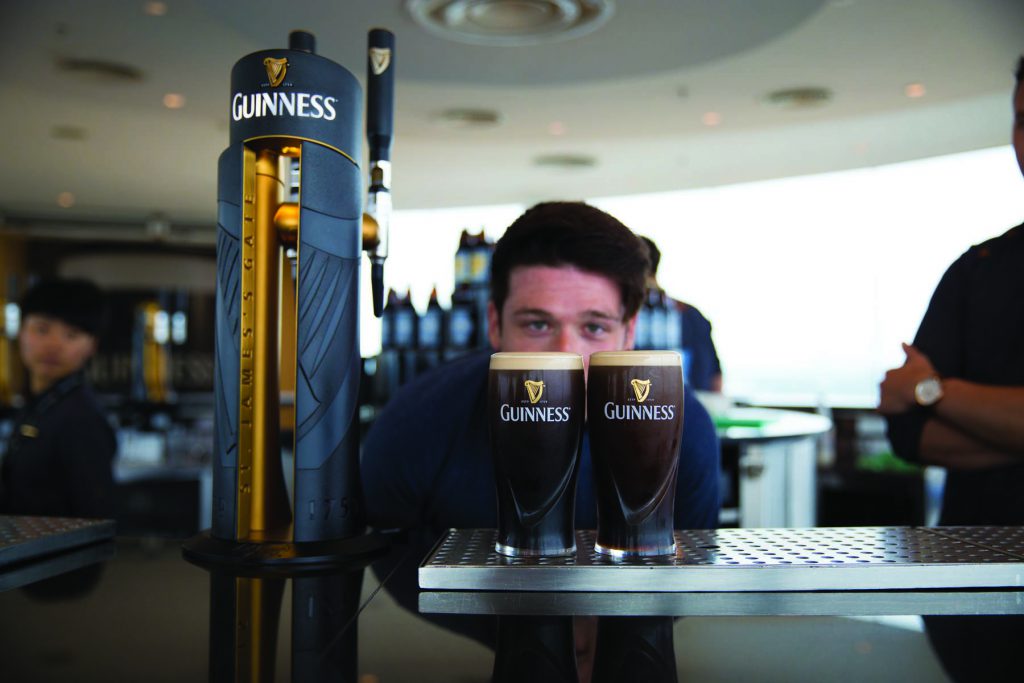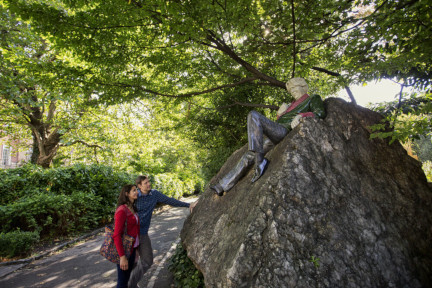
By Barry Coughlan
There was a time when I spent up to a third of my working life in Dublin; if it wasn’t for one thing it was another. I knew the sights even before some became full-blown tourist attractions, I browsed my way through the streets before the advent of city-center shopping malls, bargained for fruit purchases in Moore Street and spent time – sometimes too much time – in real Dublin spit-on-the-floor drinking houses before they were turned into expensive gastro pubs. That was indeed in the real Rare Auld Times!
But enough of that, this is 2022, we’re in another century for goodness sake; time moves on, and time moves quickly. Last week, I happened to be in the city for an evening time travel gig but I travelled early and took a good few hours to walk and observe the happenings on city streets.
It’s the height of summer, and it was a warm day. The center, from O’Connell Street, to Grafton Street and St Stephen’s Green, with a fair few diversions on the day, was teeming, and the majority of those scurrying or just lazing around were visitors, young and old; some were lining up to enter Trinity College, others getting a snapshot at the famous Molly Malone statue nearby, still more just standing listening to the buskers demanding attention on Grafton Street. No doubt, these attractions were just a minor part of a busy day exploring a city that has surprises around every corner.
As Ireland’s most-visited attraction for years now, the Guinness Storehouse is a multistory exhibition experience that insists on a visit to trace the amazing history of the black stuff, famous throughout the world and probably presented best in Dublin than anywhere else on earth. Pre-pandemic visitor numbers hovered near 1.7 million, nearly 500,000 of them from the USA!
Goodness knows how many visit the Molly Malone statue because nobody is counting, but there are other worthwhile works of art dotted around the city.

In a corner of Merrion Square is a statue of Oscar Wilde apparently lounging on a rock. Beside it are pillars inscribed with his writings.
One could, but shouldn’t, miss the seven figures on Custom House Quay to remind us of the Great Irish Famine in the 1840s, figures with gaunt, empty, eyes that tells of the starvation and desperation that pervaded the underprivileged of Irish society.
Both lows and highs are recalled in a 90 minute tour of Kilmainham Gaol which is presented in those different ways. It’s where Independence heroes Padraig Pearse, James Connolly and Joseph Plunkett were both held and executed.
The final resting place of Eamon de Valera, James Larkin and Michael Collins is in Glasnevin Cemetery. Here also are mass graves for Dublin’s poor in the really bad times and there are recommended guided tours on a daily basis.
It won’t cost much to relax in the Phoenix Park, the largest park of any capital city in Europe. It houses Dublin Zoo and a large population of free roaming wild deer. It is also home to the current Irish President, Michael D Higgins, at the impressive Aras An Uachtarain.
The best-known view of Áras an Uachtaráin is the garden front portico with its white columns. This view has drawn comparison with the White House in the United States. It is also a white dwelling of neoclassical design, and its similar use has led to apparently unfounded speculation that the Irish born architect of the White House, James Hoban, took inspiration from what is now the Áras for his design.
The Aras was built in 1751 as a home for the Park’s chief Ranger, was bought by the British for the lord lieutenants when it evolved into an elegant mansion, while the White House, planned in 1792, was completed in 1800.
Annexed to Trinity College, the Science Gallery focuses on how science affects everyday life. There are year round exhibitions, and these can be taken in during a tour of facilities at the world-famous complex which, of course, houses the Book of Kells.
I happened to pass the National Wax Museum in Westmoreland Street, in an impressive building after relocation in 2017, and I’ve marked it down for a visit next time out. Memories of my visit to the old exhibition many years ago are enough to assure me the entrance fee of around 16 Euro is a worthwhile investment.
Inside a Georgian townhouse on St Stephen’s Green, the Little Museum of Dublin features loads of paraphernalia, from vintage posters to U2 memorabilia to a cardboard cut-out of movie star Mrs Agnes Brown (Brendan O’Carroll). Entry is through a guided tour only and is designed to be a fun trip.
Another alcohol based attraction is in the fast-developing Liberties area where the Teeling Distillery features an educational presentation about the distilling process….and a mandatory tasting at the end of tour!
In that area, St Patrick and Christ Church Cathedrals are as dramatic as they are ancient. St Patrick’s dates back to 1220 and is filled with monuments and 19th century stained glass. But it is a youthful structure compared to Christ Church founded in 1030 by Sitric, King of Dublin Norsemen.

Perched on the site of a Danish Viking fortress from 930AD, and with its first stone cast by King John of England in 1230, Dublin Castle’s historical significance did not stop there. Under British rule from that point until 1921 (it was a key target during the 1916 Easter Rising), it has been a court, a fortress, even a site of execution in its time. It is now the setting for every big state event including presidential inaugurations.
There is that, and many other must-see attractions in Dublin, the National Museum, the National Gallery, the National Museum of Decorative Arts and History for instance. And much more. You’ll find most worthy information on www.visitdublin.com
Some say one can get a real feel for Dublin and take in many of the sights in a couple of days. I disagree; it will take at least four and that allows for excursions to the suburbs, to must-visit Howth to the north and Dalkey to the south to give a better oversight of the greater Dublin.
Enjoy, as I know you will!
